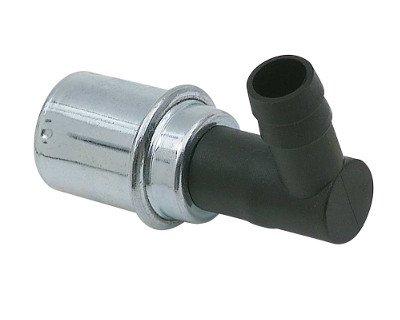Why does my car burn oil - PCV
One reason an engine is burning oil could be a broken or clogged PCV valve. "PCV" stands for Positive Crankcase Ventilation. Every engine produces blow-by, which means when an engine is running and the gases (fuel/air mix) are compressed in the combustion chamber, a small amount of gas pass the piston rings and leak into the crankcase. This causes a rise of pressure in the crankcase. The PCV release the pressure by venting the crankcase combustion gases back to the intake. Now the gases re-enter the combustion chamber where they are burned.
When your PCV valve is not working because it's broken or clogged, your engine can suck oil. Oil can pass the valve to the PCV line and enter the intake manifold. The result is blue smoke on the exhaust.
A PCV valve should be cleaned with carburetor cleaner in regular periods and replaced every few years. The price for a PCV valve is 4-10 USD.
History of the PCV
Before the PCV was developed, hydrocarbon rich blow by gases were exhausted into the atmosphere, causing air pollution. During World War II it became necessary for tanks passing deep fords. With an open crankcase ventilation water could enter the engine and causing damage. Constructors developed a closed ventilation system. The positive crankcase ventilation was born.
In the late 50th and early 60th, when environmental protection become an issue, General Motors had the idea, that a PCV valve could reduce hydrocarbon emissions. After positive tests that confirmed the lower emissions with the PCV system, the PCV became a standard equipment for cars over the next years.
Where and how can I find the PCV valve on my car?
A simple way to find the PCV valve on your car is to look at the hoses leading to your intake manifold or carburetor/injection body. One of these hoses (about half inch in diameter) should lead to the PCV valve on the other end.
